Drum Handling & Storage Safety - An Understanding
Industrial 205-litre drums and barrels can weigh up to 350kg (772lb) when full, these weights are well in excess of the UK guidance on manual handling – the male and female upper limit is 25kg and 16kg respectively. With drum weights potentially being 22 times greater than guideline manual handling limits, these containers pose a severe health and safety risk to people who handle them.
For companies that use barrels and drums within their operation, drum handling safety should be an important part of the work culture. Employers must look at the risks of loading and unloading heavy drums/barrels and put sensible health and safety measures in place to avoid the need for hazardous manual handling.
What Is A Drum? What Do We Mean By Industrial Storage Drum?
Drums are a fantastic way of storing and transporting several different types of materials and resources.
They are used widely across industries including waste management, healthcare and food services.
However, their function in such a broad range of sectors means there isn’t a ‘one size fits all’ solution.
Instead there are several types, each made from a different material and designed to serve a different purpose.
What Types Of Drum Are There?
Plastic Storage Drums
The most commonly used are plastic drums because they can be used for a wide variety of materials.
Usually made of HDPE (high-density polyethylene), which is resistant to both high and low pH contents, they are ideal for storing and transporting hazardous and non-hazardous liquid materials.
The thick walls of a plastic drum mean they are usually leak-proof.
Their construction also makes them UV-resistant, so there is a reduced chance of any heat or light damage to the contents inside.
Although not the most environment-friendly option, they are durable, which means they can be reused time and again if properly cleaned out and maintained.
That represents real value for money.
Plastic drums also come in two different designs; open-top and tight-headed.
Open-top drums are designed to allow you easy access to the contents, so are ideal for storing liquids you need to dip into simply by removing the lid.
However, they are better suited for storing dry materials.
Tight-headed drums are perfect for storing and transporting liquid materials because the lid is more securely fastened to the top.
For that reason, there is a reduced chance of spillage or accidental opening.

Steel Storage Drums
As the name suggests, these are constructed from steel which makes them highly durable and pretty much leak-proof.
They are ideal for storing, transporting and containing toxic and hazardous materials.
Their robustness ensures maximum protection because they won’t easily bend, crack or tear in transit.
Not only are they unlikely to tear or leak, but they also provide protection against fire damage.
Should a fire break start in your storage facility, the internal contents will be well-insulated.
Steel drums are also easy to stack on top of each other, which makes them a sound option if you’ve got a smaller storage area and need to optimise the space available.
Another benefit of steel drums is that, once they reach the end of a lifespan, they can be recycled without complications.
Therefore they are a sensible choice for anybody that wants a storage drum that lasts a long time but also won’t negatively impact the environment.
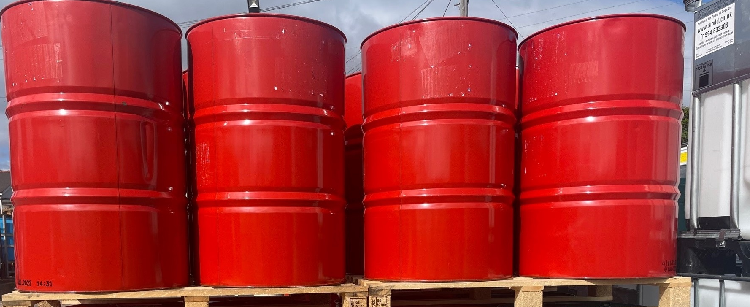
Fibre Storage Drums
This type of drum is a good all-rounder for packaging, but it is unsuitable for storing or transporting toxic or hazardous substances.
They shouldn’t be chosen for liquids either unless they are lined beforehand with an appropriate material such as a formed drum liner.
They are, however, hard-wearing and an eco-friendly option because they will degrade naturally over time.
Once they do, they and can easily be recycled at the end of a lifespan.
This also makes them a attractive option for those businesses looking to introduce more sustainability into their working processes.
Fibre drums are also lightweight, which makes them easier to move around as required.
However, don’t let that fool you; they are renowned for being incredibly sturdy and will easily store materials without a risk of tearing, breaking or leaking.
Their fibreboard construction also makes them a more affordable way to ship materials – compared to plastic or steel alternatives – because they are lightweight.
They are also available to buy cheaply, and in a range of sizes to suit specific needs.
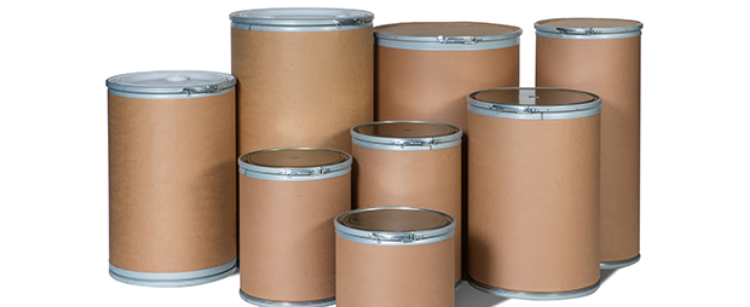
What Challenges Are There To Storing & Handling Drums?
- Many companies still ask staff to manually move drums and barrels, exposing them to the risk of injury and/or various musculoskeletal disorders (MSDs).
- Preventable workplace injuries are occurring daily in an age when drum handling equipment is readily available on the market.
- Some operators avoid using provided manual handling equipment, only to take legal action when they become incapacitated due to an injury.
- In certain scenarios poor-quality ‘safety’ equipment is used which is not fit for purpose and as a result, the injury still occurs.
- Many companies are unaware of the legislation surrounding manual handling equipment and so place their employees and their business at risk by not ensuring safe drum handling within the workplace.
- It can be difficult for companies to know whether equipment available on the market complies with the Machinery Directive or allows compliance with manual handling guidelines; just because a piece of equipment is for sale on the internet does not mean it necessarily complies with any Directives or British Standards, or that an acceptable risk assessment can be written about the use of such equipment.
- The pushing, pulling and lifting forces operators exert when using drum handling equipment are often found to be in excess of recommended handling limits.
- In some cases, drum handling products are available on the market for purchase, without the required guarding being supplied.
- Electrical equipment designed for use in the workplace must conform to the applicable electrical regulations and be assembled by suitably qualified personnel.
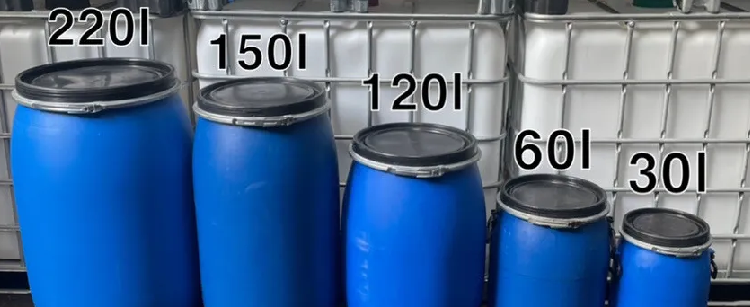
Typical Poor Handling Practices
- Manually moving drums by hand, churning them from ‘A’ to ‘B’ by balancing the load on the bottom edge of the drum; the loads experienced can exceed 90kg resulting in strain to the body, poor posture also increases the chance of injury;
- Pulling or lifting drums manually from (or onto) a pallet using excessive force, there is the potential for strain injuries and finger entrapment;
- Dropping drums into the horizontal position by pushing or tipping them over, this uncontrolled action risks injury, a spillage or spark creation in an ATEX area;
- Two-person drum tipping with one person holding each side of a heavy drum;
- Decanting drums/loading racking with a forklift by lifting them up in the horizontal orientation, drums can slide off the ends of the forks causing damage or injury.
Common Injuries From Drum Handling
- Broken or crushed limbs (particularly lower legs) when churning full drums and they fall hitting the employee;
- Bruised, broken or fractured fingers/hands following entrapment between drums on a pallet;
- Wide-ranging musculoskeletal disorders as a result of long-term improper handling of heavy loads, often involving the spine/back, shoulder or neck.

Recommended PPE For Drum Storage & Handling
- Safety footwear should always be worn;
- Hard hat – if lifting loads at or above head height;
- Chemical resistant work gloves – if handling hazardous substances;
- Protective safety goggles – if decanting chemicals which have a potential to splash;
- Respirator – if decanting materials that give off noxious vapour or dust.
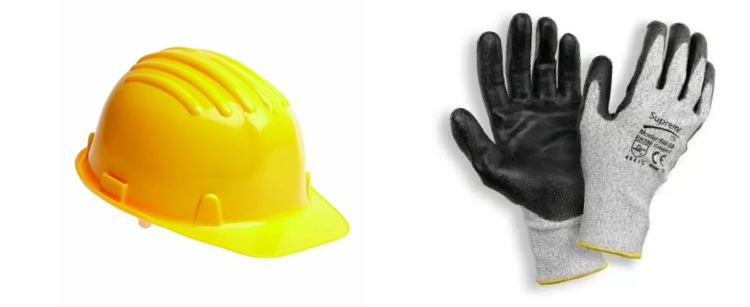
How Do I Move A Drum Safely?
- Before moving, check the drum for damage and ensure the bung/lid is securely fastened.
- Wear appropriate PPE, drums of hazardous chemicals may be coated in dangerous residues.
- When moving drums from ‘A’ to ‘B’ ensure the pathway you plan to take is clear and free from debris.
- Ensure the drum trolley being used is in a good condition and is designed to handle the specific drum-type being handled; some drum trolleys cannot handle plastic open-top drums, luckily our unique drum trolley can handle plastic drums with ease.
- Do not attempt to move drums up and down steep slopes with manual equipment not intended for the application.
- Operate drum hand trucks with a straight back using two hands and your leg if required by the design of the trolley; ensure no one is standing close to the load during manipulation.
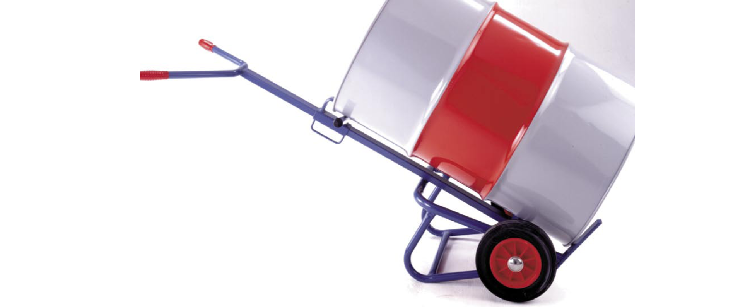
What Products Are There To Handle & Store Drums?
One thing we are passionate about here at HSE Store, is giving as much information we can so that you can make the best decision from the start. There is nothing worse than making a purchase and realising what you bought is the wrong model, or the wrong type for the application and task at hand.
Below we will outline all the things you should be considering when looking through our range of trucks and trolleys for your business.
Drum or barrel handling dollies are essential in a variety of industrial contexts where big drums or barrels must be transported and managed often. These dollies are equipped with specialised features for the effective and safe handling of cylindrical containers, such as drums storing liquids, chemicals, or other commodities.
Drum handling dollies, which have solid frames and wheels, provide mobility and stability, allowing workers to easily transport big items across diverse terrains and in limited spaces. By eliminating the need for physical lifting and carrying, these dollies lower the incidence of strain-related accidents among workers, boosting workplace safety and efficiency.
Drum handling dollies are important for more than just convenience; they also help to maintain product integrity. Many drums contain delicate ingredients that must be handled carefully to avoid spills, leaks, and contamination.
Drum or barrel lifters and trolleys are essential pieces of equipment in sectors that handle significant cylindrical containers on a daily basis. These specialised equipment are designed to help with the safe and effective lifting, positioning, and transportation of drums containing a variety of products such as chemicals, liquids, or powders. Drum lifters and trolleys have strong lifting mechanisms and ergonomic designs that allow workers to easily hoist huge loads, lowering the risk of strain-related accidents and increasing workplace safety.
These devices improve operational efficiency and production by providing a solid and secure platform for carrying barrels, allowing personnel to focus on their responsibilities without being distracted by the difficulties of manual handling.
- Sku: drumlifter4wheelsolid
Loadtek Manual Drum Lifter Trolley Jack – 300kg Load – 4 Wheel – Solid Rubber Tyres
From £424.17 Ex. VAT Select options This product has multiple variants. The options may be chosen on the product page
Chemical drum stands are specialised pieces of equipment used in industrial settings to safely store and handle chemical drums. These platforms are often made of strong materials like steel or HDPE and are designed to withstand the corrosive effects of various chemicals.
Chemical drum supports perform various vital functions, including providing a sturdy platform for drum storage, minimising spills and leaks by elevating drums above ground level, and making it easier to dispense or transfer chemicals. These supports serve to streamline workflow processes by keeping drums organised and firmly positioned. They also reduce the danger of accidents and environmental pollution. Furthermore, some chemical drum stands may include additional containment features, such as spill containment basins or trays and sumps, which improves safety precautions.
Drum sumps are containment systems that collect leaks, drips, and spills from drums or other chemical containers, assuring the safe storage and handling of hazardous compounds in industrial environments. Drum sumps, which are often made of durable materials such as polyethylene or steel, have a basin-like shape with raised edges to contain spills and keep them from spreading to the surrounding floor or environment.
These units are critical for meeting regulatory requirements for the containment of hazardous substances because they reduce the danger of environmental pollution and occupational mishaps. Drum sumps provide an additional layer of protection against chemical spills, leaks, or overflows, protecting both humans and the environment.
Drum forklift attachments are specialised instruments used in industrial situations to handle drums or barrels safely and efficiently. These attachments are often put on forklift trucks and are intended to firmly grip and lift cylindrical containers, such as drums storing liquids, chemicals, or other goods.
Drum forklift attachments are available in a variety of forms, including as clamps, hooks, and cradles, each adapted to distinct drum types and loading configurations. They serve an important role in accelerating material handling operations, allowing forklift operators to handle barrels with accuracy and control while reducing the danger of spills, drops, and accidents.
By offering a secure attachment point and a sturdy lifting mechanism, these attachments improve workplace safety, reduce manual handling requirements, and optimise industrial operational efficiency.
- Sku: plasticdrumclamp
Loadtek Forklift Plastic Drum Clamp – 500kg Load
£528.79 Ex. VAT Select options This product has multiple variants. The options may be chosen on the product page - Sku: 210drumclamp
Loadtek 210 Litre Forklift Drum Clamp – 500kg Load
£504.09 Ex. VAT Select options This product has multiple variants. The options may be chosen on the product page
Drum storage racking is a type of shelving system designed for the safe and efficient storage of drums or barrels in industrial environments.
These racks are typically made of sturdy materials such as steel and are designed to support the weight of many drums while allowing for easy loading and unloading.
Drum storage racking systems are available in a variety of configurations, including horizontal, vertical, and stackable designs, allowing for efficient space utilisation in warehouses, manufacturing facilities, and distribution centres.
They are utilised to organise and condense drum storage, which reduces clutter and maximises floor space. Furthermore, drum storage racking aids in compliance with safety rules by offering a solid and secure storage solution that prevents drums from toppling, leaking, or creating accidents.
How Do We Improve General Workplace Safety - Tips!
- Ensure the workplace is clean, tidy and well illuminated. Staff should be able to see what they are doing and should not easily trip or fall over objects left lying around.
- Manual handling training should be provided to all staff at regular intervals. The training should include specific manual handling scenarios which are experienced during normal business operations.
- Risk assessments should be completed, and any mitigation actions should be taken, thus reducing the overall risk of injury in the workplace.
- Employees should read all risk assessments and ensure they work in accordance with standard operating procedures (SOPs).

10 Quick Tips For Drum Storage & Handling
Use Secondary Containment Measures
One of the most essential measures you can take for secure storage is using secondary containment measures. Use bunded storage to ensure any leaks or spills are immediately contained, before they cause damage to your building or harm to your workers.Use Sturdy Warehouse Racks
Full chemical drums can hold hundreds of litres of hazardous substances. Multiply this by however many drums you’re storing, and you most likely have an immense weight sitting on your storage racks. Therefore, it’s important to check that the shelving within your chemical drum storage unit can safely hold the drums’ combined mass.Designate Specific Areas
Having a designated set down area helps your staff inspect new chemicals, and their safety data sheets. It ensures the new substances are separated from the rest until they are deemed secure, preventing any mix-ups. Additionally, having a designated and controlled area for transferring the chemicals from one set of packaging to another will also help avoid accidents from occurring.Draft an Emergency Response Plan
Since drums contain such a high volume of chemicals, having an emergency response plan is even more important. Draft a response plan to cover key points, such as containment, evacuation and clean-up, and ensure all of your staff are well versed in the protocol.Use Clear Labels
One of the most important aspects of secure chemical storage is also one of the easiest to implement. Ensure all of the drums are clearly marked with their contents, and any appropriate warning symbols. This prevents mix-ups between substances, and alerts workers to potential dangers when handling the chemicals.Schedule Regular Inspections
Drums can be susceptible to rust, leaks or other damage in even the most secure chemical drum store. Regularly inspect the containers to check for security risks, as early intervention is key in accident prevention.Segregate the Chemical Types
Certain chemicals can have volatile reactions to one another, and so should be stored separately. While this may seem unnecessary when they’re securely contained in drums, if leaks occur the results can be disastrous.Use Drum Covers
If your drums are stored outside, invest in drum covers to protect the integrity of your chemicals. These secure your chemicals against the elements, and prevent weather damage from occurring.Train Your Personnel
The majority of chemical accidents happen during transportation. As a result, only trained fork lift drivers should be allowed to move the substances within your bunded drum store, to minimize the risk.Use Pallets Outdoors
If your bunded drum storage unit is located outdoors, make sure you store the drums on pallets. This ensures they’re not submerged in water during bad weather, thus protecting the integrity of the containers.Final Thoughts
We hope that you enjoyed reading our guide and found it very engaging and something to think about very carefully from a health and safety point of view while at the same time a revenue increasing investment for your business.
We only supply the best top quality safety equipment here at HSE Store that is manufactured right here in Britain.
For further reading, see the rest of our knowledge base articles by clicking here.
You can view the entire range of our trucks by clicking below.

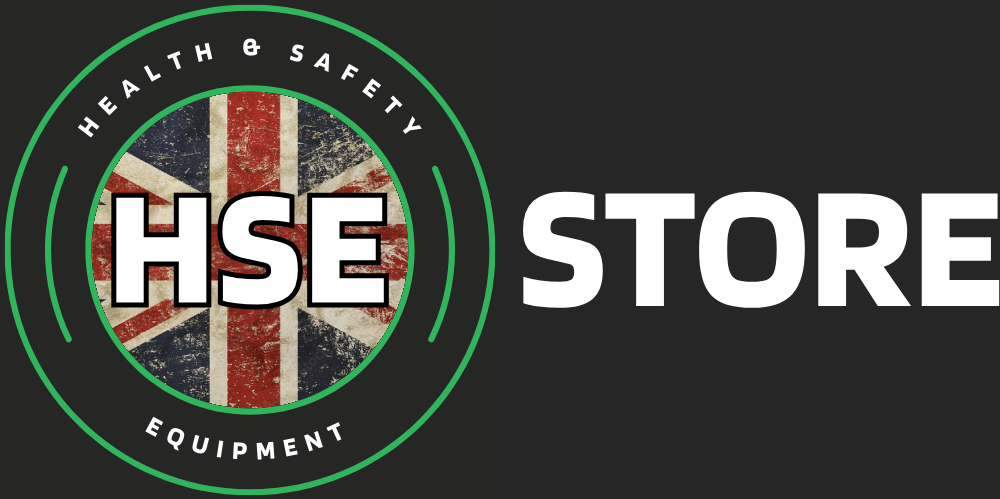
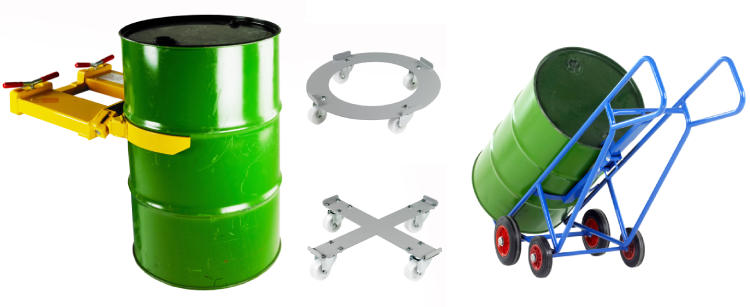





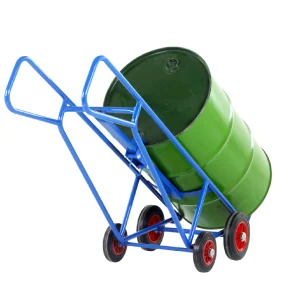


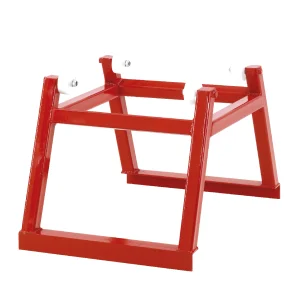
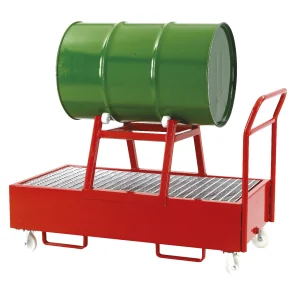
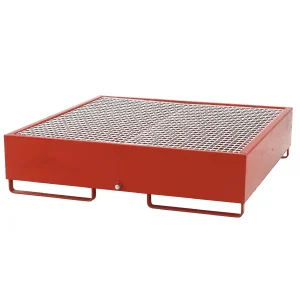
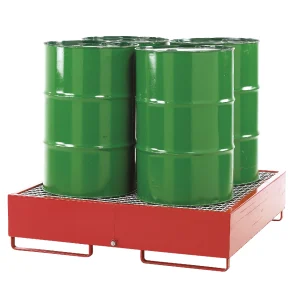
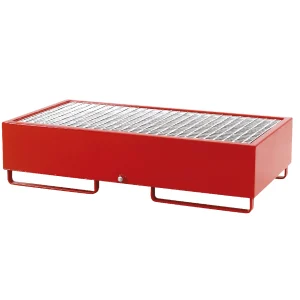



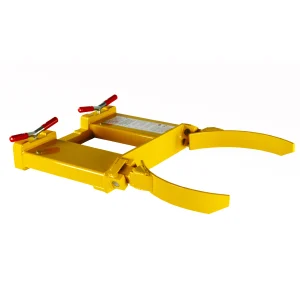
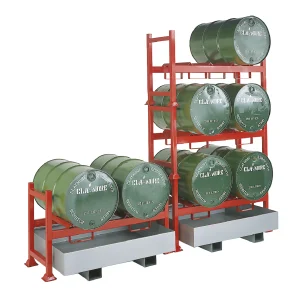
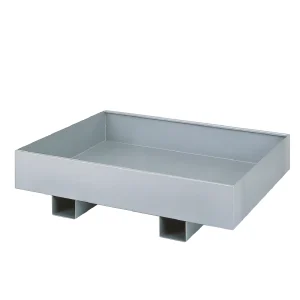



 No products in the cart.
No products in the cart.